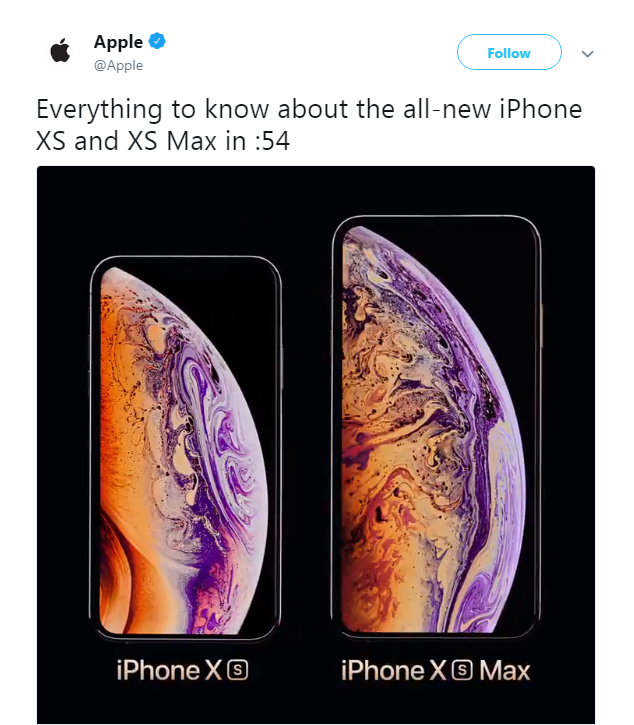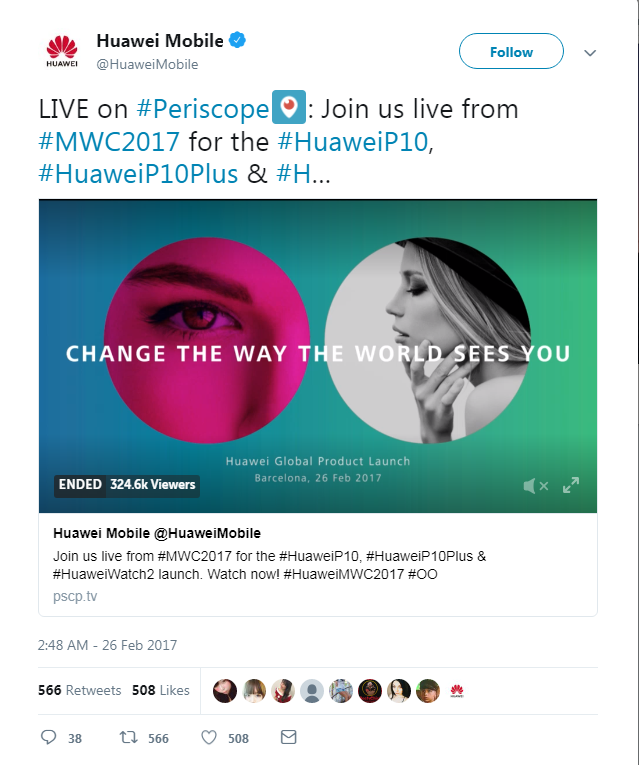Apple product launches are unique, and like every year, every geek around the world was looking forward to their annual event.
So, when the product launch event was scheduled on 12th September, everyone had their eyes set on the big launch of Apple iPhone XS. There was palpable excitement on every social media platform. However, something peculiar caught the eye of Twitter users. Unlike other brands that create a lot of buzz about their product on their official company handle, Apple had zero tweets about the launch. In fact, leave alone the product launch, Apple has not tweeted even once from the time it created its official handle in 2011.
Yes, you read it right, Apple does not tweet from its official handle despite having 2.31 Million followers!

Yet curiously enough, Twitter users found tweets about the new iPhone from Apple’s official handle on their timeline. This meant that while Apple did not tweet organically, it made sure that they dominated the timeline of the Twitter users through promoted ads before, during, and after the event.

In fact, according to an article on Digiday, Apple spent over $200,000 per day on promoting a trend and over $250,000 for a customised ‘like for reminder’ option that prompts the user to like the tweet to get a reminder and link to the live event.

It’s not the first time that Apple did something wacky as this. The trillion-dollar company has been creating a similar buzz about their product launches and dominating the Twitter conversations through promoted tweets since 2016.
Decoding the strategy
Contrary to the usual marketing strategy of promoting ads on popular platforms such as Facebook and Instagram, Apple decided to promote the launch on Twitter due to the nature of the platform. The tech giant is aware that despite its less popularity as compared to Facebook, Twitter is the platform where maximum discussions occur. It is where journalists and everyone, in general, discuss the trending topics. So, by promoting the tweets in over 12 languages, Apple was able to reach a wider range of audience and ensue discussions about the event. This not only enabled them to get the right amount of publicity (which they would have any way received), but it also helped them receive live insights about what their fans and detractors had to say about the product and the event by using social media listening during the event that was aired on Twitter.
While the sales figures and the ROI generated out of the massive marketing spend is still awaited, one thing is certain – with over 1.9 million tweets about the launch and product, Apple was successful in creating the right kind of buzz on social media.
Other brands that are leveraging Twitter for their launch
Apple is not the only company to have leveraged Twitter to promote their product. The added features such as live video streaming and like for a reminder has encouraged mobile companies such as Motorola, Huawei and Xiaomi to choose Twitter to generate curiosity about their products.
Let’s look at these examples.
#1 – Motorola
When Motorola decided to launch MotoG6 and MotoG6Play in June, it ensured that there was enough buzz to create an environment of anticipation in social media. The brand had to devise a way to cut the clutter on social media platforms. So, it started with encouraging the users to engage with pre-launch tweets by liking or retweeting the tweets to receive a personalised reminder when the event begins. On the day of the event, Motorola notified the users about the live streaming. After the four-hour live event replete with performance from entertainment artists, and talks by tech gurus; the brand sent another reminder to the users informing them about the sale. The entire efforts led to 27K likes and retweets, 370K+ views of the live stream video, and over 57K account and hashtag mentions.
#2 – Huawei Mobile
Huawei was planning to launch its new smartphone P10 at GSMA Mobile World Congress (MWC) – a key platform for promoting major product launches. Huawei wanted their launch to be on the top of everyone’s mind. To do that, the brand followed a two-step strategy.
First, it created a First view teaser of the new phone and promoted it to ensure that it remains at the top of people’s timeline for 24 hours.

Source: Twitter
Then it used Periscope – a live video streaming app acquired by Twitter to announce the launch of the smartphone. The broadcast received high viewership and increased the engagement and conversation around the product on Twitter.

Source: Twitter
Considering that the launch was held around the same time as the Oscar event, it was surprising to see that #HuaweiP10 was trending at no.1 spot in Spain. The entire campaign was a success as it resulted in 230,900 live broadcast viewers and 11.7 million impressions!
#3 – Xiaomi
Xiaomi had launched its smarter living products in India on 27th September after creating a lot of buzz through its teasers. They shared regular updates about their new range of product by tweeting live.

Source: Twitter

Source: Twitter
What can other brands learn from these examples?
#1 – Leverage the new features on Twitter to build the momentum
With great features such as live video streaming and like to remind; Twitter has provided a perfect opportunity to the marketers to generate momentum and to garner attention towards the product. Brands must leverage it to veer the conversation towards their products. However, you must also close the loop once the objective is met.
#2 – Listen to the conversations of the users to plan your next campaign
With the help of social listening tools such as Germin8 social listening, brands can understand the sentiments of its audience better and plan their next campaign accordingly. It also enables them to address the issues that people might face to thwart the opportunity of earning bad press.
#3 – Create interesting teasers and stories to generate curiosity
Twitter promotions are costlier than the ones used by Facebook or Instagram. So, ensure that your brand can build enough curiosity among people to engage with your tweets. The brands mentioned are renowned and can afford to spend that much moolah on promotional tweets. However, if your brand has not built enough reputation online, then we recommend that you build credibility through organic approach and then spend money on promoting marketing campaigns.
These are a few ways in which you can leverage Twitter and social media listening to promote your brand.
If you liked what you read, then please subscribe to our blog. We promise to share the latest nuggets from the world of social media and branding with you.
And if you are interested in trying our social listening tool, then click here to sign up for a free trial of Germin8.
